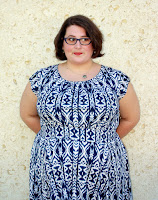Today, for the first time in Multicolored history, we have a guest blogger!
My dear friend and former comrade in the Storytelling program, Danielle Bellone (I wrote about her fabulous Finest Hour performance on the blog), is working in the new field of "new trad" storytelling. Since it is a fascinating topic, I asked for her take on it, explaining what "new trad" is, and why it is important.
Read it in her own lovely words!
* * *
It’s a Tuesday night. I am feverishly sorting through stacks and stacks of collections of folk and fairy tales. Calvino, Andersen, Carter, Beckwith, Ragan. I even have The Russian Secret Tales and Pissin’ in the Snow, two collections of naughty stories from Russia and the Ozarks, respectively, not meant for innocent ears. Surely in these risqué collections I will find something close to what I’m looking for. But no! There is nothing! Not in the Gumbo Ya-Ya, not in Fairy and Folk Tales of the Irish Peasantry. I slam closed another book, and wail my despair up to the gods of storytelling,
WHERE ARE ALL THE GAY FOLK TALES??
My journey to new trad storytelling started when my friends Jenny and Marisa asked me to tell a story at their wedding, I searched and searched through tomes of folktales. I nearly settled on a Russian folktale called “The Magic Ring” for its ring imagery and happy ending, but I realized that in order for me to tell it comfortably, I felt the need to do a feminist rendering of the story, and it became more about politics than love. The more I searched for love stories among folk tales, the more politicized I felt, until every story I touched felt more about confronting the patriarchy than the joyous celebration of a union. And every love story I found with two same-sex characters seemed to end in suicide, gender-swap, or one of the lovers being turned into a constellation. If I wanted a lesbian love story that didn’t end in tragedy, I was going to have to make it myself. And once I did, I realized how hungrily I had been waiting for a story of women, and only women, loving and creating.
Inadvertently, I had stumbled upon the world of new trad. The term “new trad” has been in circulation in the realms of poetry and architecture for a while. It’s short for “new traditional” and refers to the practice of using traditional pieces in new ways. It’s the same in storytelling: new or original stories that are made of traditional pieces. They do not reinterpret classic or traditional tales. However, they do contain elements of traditional tales: there may be heroes, crones, dragons, enchantments, dark nights of the soul, and other familiar tropes, but it’s not just Cinderella with a cell phone.
By giving us the distancing mechanisms of folk tales, new trad allows us to storytalk about things that most folk tales don’t quite reach, either because they were culturally taboo or because they just didn’t exist yet. With new trad stories, a teller can address topics like interfaith relationships, social media, miscarriage, and massive student debt…topics that traditional folk tales usually don’t have a handle on. Or, as in my case with the lesbian wedding, we can tailor a story to an exact situation for greater relevance and authenticity. And we can do so without trampling on other cultures by wantonly changing their stories’ themes to suit our own motives.
So now, if you have the entire world of topics free for the crafting-into-stories, what would you tell? What stories have you been hungering for?
Danielle Bellone is a storyteller, harpist, fabulist, poet, and native of Louisiana. She completed her Master’s in Storytelling at East Tennessee State University, and now makes her home in the strange hills of Austin, Texas. She was recently featured on the BYU Radio podcast "The Apple Seed," and was invited to perform at the National Storytelling Conference. Her work can be read in Indigo Ink's Modern Grimmoire, or heard in her storytelling album, Moon-Eyed Sister.

More stories with strong girls--sometimes, if I feel a story could work with it being genderflipped (so a princess is rescuing a prince) or with a character being made a girl (sometimes in twin boy stories, I will change it to a boy and a girl), I will change it to feature a girl
ReplyDelete